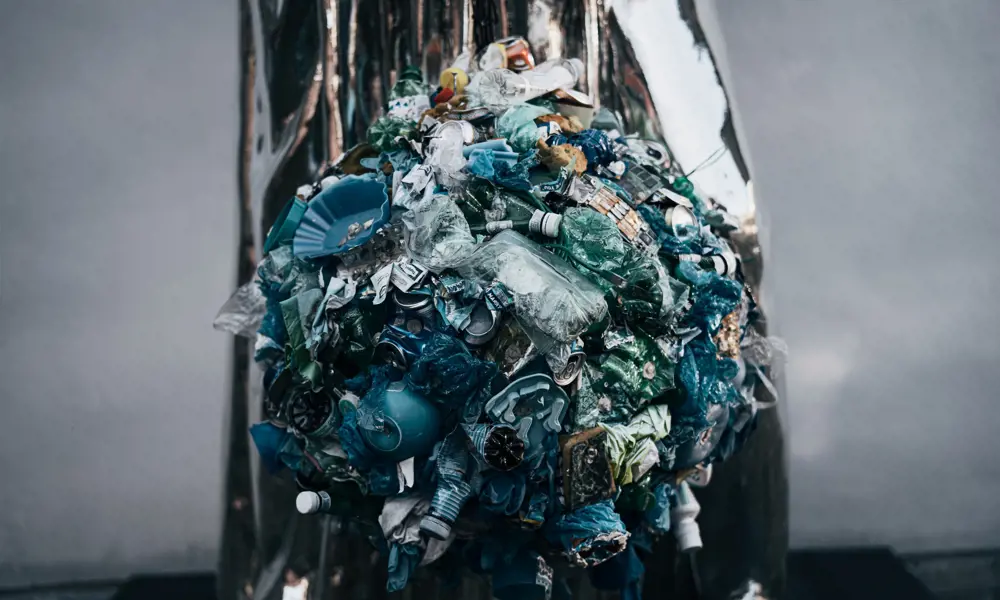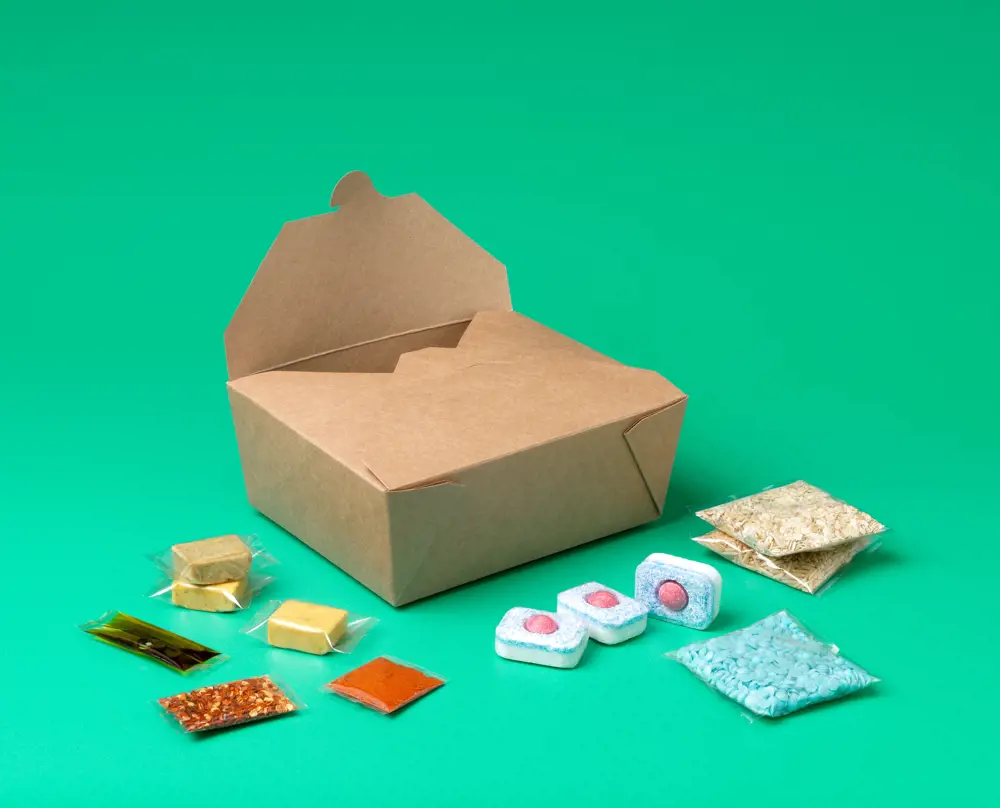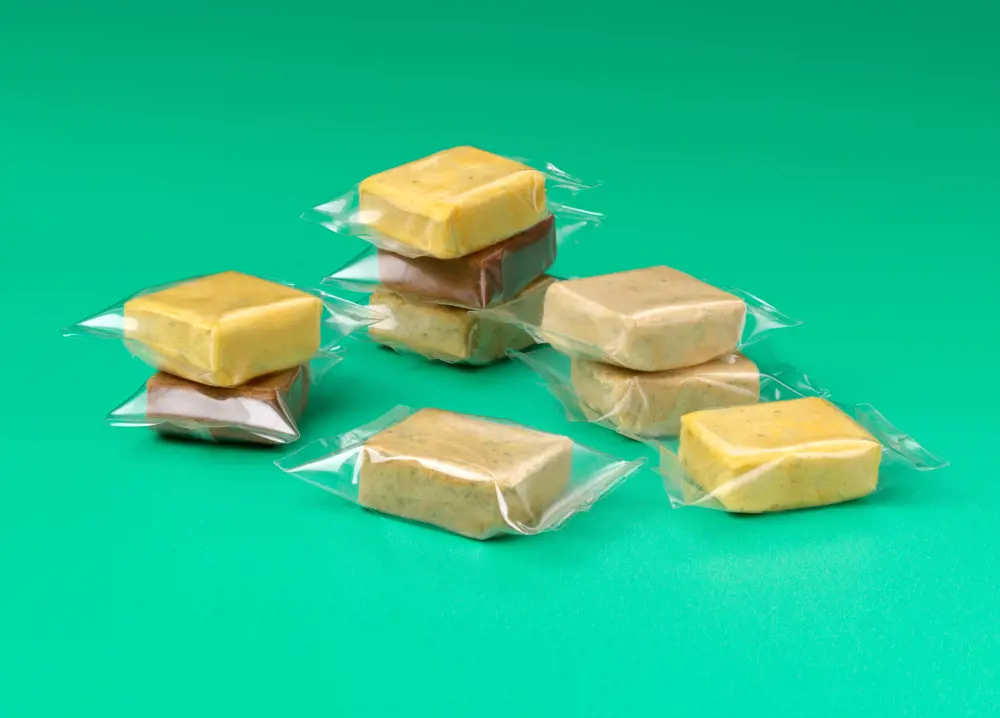
Kicking single-use plastics to the curb
From the debris at the bottom of the deepest ocean trenches, to the microparticles in our lungs, and even amorphous blobs melted into volcanic rocks, synthetic plastics have well and truly made their mark on the planet.
On the face of it, plastics designated as ‘biodegradable’ or even better, ‘home compostable’, may seem like they present a solution. But UCL’s recent Big Compost Experiment, a citizen science survey of over 1,600 people, found that 60% of ‘home compostable’ plastics did not fully disintegrate after six months.
In a bid to help solve the plastic pollution crisis that is coming to define our age, University of Cambridge spinout Xampla has developed a genuinely biodegradable, plant-based plastic alternative that bacteria can digest in just a few weeks.
From spider silk to plant proteins
Xampla’s work originated in biophysicist Professor Tuomas Knowles’s lab at the University of Cambridge. One of the topics the lab was investigating was how natural materials such as silk self-assemble into super-strong materials – and whether they could replace synthetic polymers such as plastic.
Tuomas and his team began asking whether the biophysical principles that govern spider silk could apply to proteins found in nature that don’t normally behave that way – especially from plants.
“It’s trying to mimic what the spider does [at] scale, but taking much more available, sustainable raw materials and trying to control and then scale that self-assembly,” says Marc Rodriguez-Garcia, Xampla’s Chief Technology Officer.
The upshot of using plant proteins, such as pea protein, is that they are comparatively inexpensive and abundant, compared to animal-derived proteins.
“We’re a bit agnostic – we just want to take plant proteins and other natural biopolymers and convert them into functional materials,” says Marc. And for their non-edible products, the Xampla team believes there’s no shortage of agricultural waste products they can repurpose into materials. “I don’t think we’re going to be suffering from lack of feedstocks!”

Xampla’s plastic alternatives can be used as edible sachets for stock cubes and individual servings of food; coatings for takeaway food containers; and to encapsulate active ingredients for laundry and personal care items © Xampla
A happy accident
The team in the Knowles lab wasn’t originally looking for a plastic replacement, but found it nonetheless.
“It was a bit of a serendipitous experiment – something went wrong, we spilled some material, and it dried up,” says Marc. By accident, the scientists had made a “remarkably strong” film.
The soy proteins they were investigating at the time are normally insoluble (do not dissolve) in water – forming big aggregates (clumps). To unfold them, the team heated them up in a solution containing acetic acid (found in vinegar) to high temperatures. They then applied high-frequency vibrations in a process called ‘ultrasonication’ to unfold the plant proteins. Then, slowly lowering the temperature encouraged the proteins to self-assemble into a network. This was what caused its strong film-like properties.
“What was interesting is that it was very robust in high humidity [environments]. You can make strong films from things like seaweed or cellulose, but they’re very sensitive to moisture and water,” says Marc.
“That’s when we realised it could have some interesting packaging applications. We can easily say that our materials have similar strength to some standard plastics, like low-density polyethylene.”
Today, the process Xampla uses is similar, although the team has moved onto other proteins, including pea and a rapeseed by-product. Instead of ultrasonication, Xampla is now producing their materials using much more industrially scalable processes, targeting larger volumes and cost-efficiency.
Not just another ‘bioplastic’
But Marc is careful to point out that Xampla isn’t trying to replace all kinds of plastic. Indeed, in the right setting, with the right recycling infrastructure, plastics can be incredibly useful – being as they are, durable, lightweight, and versatile.
“A lot of people want to have a like-for-like replacement for plastic,” he says. “A lot of the work we’re doing is making sure we can replace the right types of plastic.”
So, Xampla’s focus is on what Marc describes as “the most polluting plastics” – where over-engineered, long-lasting plastic is not needed.
One example he gives is flexible, single-use plastic films with a relatively short shelf-life. These are too small to be captured in recycling waste streams and often find their way into the environment. Xampla’s first product aiming to solve this problem is an edible stock cube wrapper, launched in partnership with meal-kit retailer Gousto.

Stock cubes wrapped in Xampla’s edible film © Xampla
But that’s not all the company is working on. The same drop-in high performing natural material has many other uses, outside of replacing the most polluting plastics. For example, in partnership with drinks manufacturer Britvic, the team has developed edible microcapsules that can encapsulate and protect vitamins and nutrients added to drinks. They expect these to be on the market in 2023.
By building on this, it aims to replace synthetic polymer microcapsules – a source of microplastics that are intentionally added to consumer products to encapsulate active ingredients, such as fragrances in laundry and personal care products.
Yet another example he gives is coatings – micron-thick layers of plastic coated onto paper or flexible films – which are impossible to recycle because they can't be properly separated.
“There’s lots of applications where that synthetic polymer provides the right sort of shelf-life stability, the right performance, but in reality it’s used for a very short period of time and then is very difficult to recycle,” Marc says.
Breaking down and scaling up
Unlike the synthetic plastics Xampla are trying to replace, Xampla’s natural biopolymers are familiar to microbes, so they have the enzymes to break them down.
“We’ve done extensive biodegradation testing for our materials. In 28 days, it’s completely gone,” says Marc. This includes more challenging marine environments, which are less rich in bacteria than soil composting conditions.
With that box ticked, Xampla has scaling up in its sights. The team is working on making its materials compatible with existing industrial processes, while keeping precise control over the nanoscale properties – and therefore the material properties.
“We’re making sure we're formulating our materials so that they ‘drop in’ to existing manufacturing processes,” Marc says. This will keep costs down, which is important when potential customers are used to the price of synthetic polymers.
At the same time, Xampla wants to manufacture the product without using toxic chemicals. The team is also keen to ensure the materials involved are recyclable, and the process is energy- and resource-efficient.
“I think that’s one of the other challenges we're determined to solve, like we could probably generate very strong materials. But if our process generates a lot of waste, it uses lots of toxic chemicals, then it’s no longer that green, even if the end product is completely biodegradable.”
With Xampla’s existing high-profile partnerships, the demand from customers is certainly there. The limiting factor is their current production capacity.
“There’s a maximum amount of material we can make per day. We know we need to make way more to be able to [fulfil orders], so short term, we’re building a pilot plant to increase pretty much tenfold,” says Marc.
“Long term, we’re continuing to do a lot of R&D to make sure we bring new innovations into the work we do, and to ultimately develop materials from natural polymers that continue providing benefits to consumers without compromising on what happens to them at end-of-life.”
Keep up-to-date with Ingenia for free
SubscribeRelated content
Design & manufacturing

Super cool(er)
Welsh startup Sure Chill has developed a cooler that uses the properties of water to keep its contents cool for around 10 days without electricity. This is ideal for storing items such as vaccines where electricity sources are unreliable.

R&D investment makes good business sense
In just five years, Dr Ralf Speth FREng has presided over a revolution in design and manufacturing that has helped create a new family of engines and has overhauled Jaguar Land Rover (JLR) production facilities.

Steel can arise from the ashes of coal
Thousands of people were laid off in the UK steel industry in 2015 and there are pessimistic future forecasts. Professor Sridhar Seetharaman of the Warwick Manufacturing Group argues that smaller, flexible steel mills implementing new technology would better cope with fluctuating global trends.

Integrating metrology in business and academe
Professor Jane Jiang’s interest in measuring began when she worked on a bus production line in China. She found that the best way to improve quality, consistency and productivity was through metrology, the science of measurement. Today, she runs the UK’s largest metrology research group.
Other content from Ingenia
Quick read

- Environment & sustainability
- Opinion
A young engineer’s perspective on the good, the bad and the ugly of COP27

- Environment & sustainability
- Issue 95
How do we pay for net zero technologies?
Quick read

- Transport
- Mechanical
- How I got here
Electrifying trains and STEMAZING outreach

- Civil & structural
- Environment & sustainability
- Issue 95